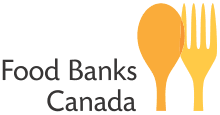Canada is expected to rank third globally in wheat exports for the 2024–2025 crop year.

As crop production in the prairie provinces keeps rising, Canada is poised to become the third-largest wheat exporter in the world for the second consecutive year.
According to U.S. Department of Agriculture data, Canada surpassed Australia to take third place in the 2023–2024 crop year and is expected to do so again in 2024–2025. A 2024-25 projection published last week by Agriculture and Agri-Food Canada projects that the nation’s production of all major field crops will rise 1.8% annually and 2.4% above the previous five-year average.
Not with standing the drought, Canada came in third place for wheat production last year as a result of Australian farmers’ weather-related crop volume issues. China, Indonesia, Japan, Bangladesh, and the United States were the top five destinations for Canada’s about 21.8 megatonnes of wheat exports to 65 countries in 2023–2024, according to AAFC. Additionally, the demand for wheat has been rising globally.
According to USDA projections, the world’s wheat consumption is expected to rise by 0.6% in 2024–2025, driven by heightened demand from Southeast Asia, the Middle East, and North America. Durum exports from Canada via the nation’s authorized elevator system are currently about 25% higher than last year’s totals, according to the Canadian Grain Commission.
Wheat is more susceptible to water shortages than other mainstays like maize, rice, and soy since it is a “thirstier” crop. According to the Washington-based World Resources Institute, drought and water supply stress brought on by climate change would threaten over three-quarters of the world’s wheat output by 2040.
However, Stewart Oke, a farmer from central Alberta and a director of the producer group Alberta Grains, claimed that Canada keeps funding agricultural research and development, enabling farmers there to gradually raise their yields. The decline in the value of the Canadian dollar is also helping Canadian wheat exporters since it increases the appeal of the nation’s agricultural products to buyers around the world.
Canada’s Need for Food Banks Monthly Visits to “Spiralling out of Control” Exceed Two Million

With almost two million visits in March 2024, Food Banks Canada reports that Canada’s food bank visits have hit a sobering milestone as poverty in the country continues to spiral out of hand.
The recent Food Banks Canada HungerCount 2024 study states that nearly 30% of food banks in Canada say they are running out of food due to the relentless “one-two punch of housing and food inflation.”The heartbreaking report, which is the only study to cover Canada’s 5,500 food banks and community organizations, emphasizes how widespread poverty, food insecurity, and hunger are in Canada as a result of rising inflation and insufficient social services.
Assist Food Banks Canada in Bringing About Change: Two Ways to a Better Future
“Food Banks” Canada thinks that a dual-path strategy is the best course of action. To give the millions of individuals who are currently struggling much-needed relief, governments must quickly implement income measures.
We urge all Canadians to join us in calling on governments to restore the social safety net that has been in ruins for decades. Low-income workers, single adults, renters, and communities in the North need improved support. We are getting closer to a time when no one in Canada goes hungry with each action we take.
Concerning Canada’s Food Banks
Leading the charge to combat food insecurity in Canada is Food Banks Canada. Our goal is to lead the nation in reducing hunger now and preventing it in the future by working with the food bank network from coast to coast. Supported by cutting-edge research, Food Banks Canada has distributed more than $829 million in food assistance and more than $245 million in funding since 2010 to increase our collective impact and build local capacity.
We also advocate for governments to take significant steps to address hunger and its underlying causes. We have a clear goal: to make Canada a place where no one goes hungry.
Current Economic Developments in Canada: Overview for Fall 2024

During the first half of 2024, economic activity grew at a moderate rate thanks to increases in government consumption expenditures, non-residential corporate investment, and household spending. While increased oil and gas extraction helped to boost goods production in the middle of the year, increases in public sector activity boosted economy-wide output in the first half. As mortgage borrowing progressed at a moderate clip, the household credit-market debt to disposable-income ratio trended downward.
Growth is supported by government expenditure and investment by non-residential businesses.
The second quarter saw the biggest quarterly growth in government consumption spending since the beginning of the pandemic, a 1.5% increase.
As hours worked increased at all levels of government, the growth was bolstered by higher pay and salaries. Three of the last four quarters have seen an increase in government consumption spending, which was 2.8% higher year over year.
In the second quarter, consumers contributed less to growth. Spending by households increased by 0.2%, compared to 0.9% in the first quarter. Lower spending on new trucks, vans, and sport utility vehicles—which fell for the first time in eight quarters—balanced higher expenditures on essential home services including utilities, petrol, and rental fees.